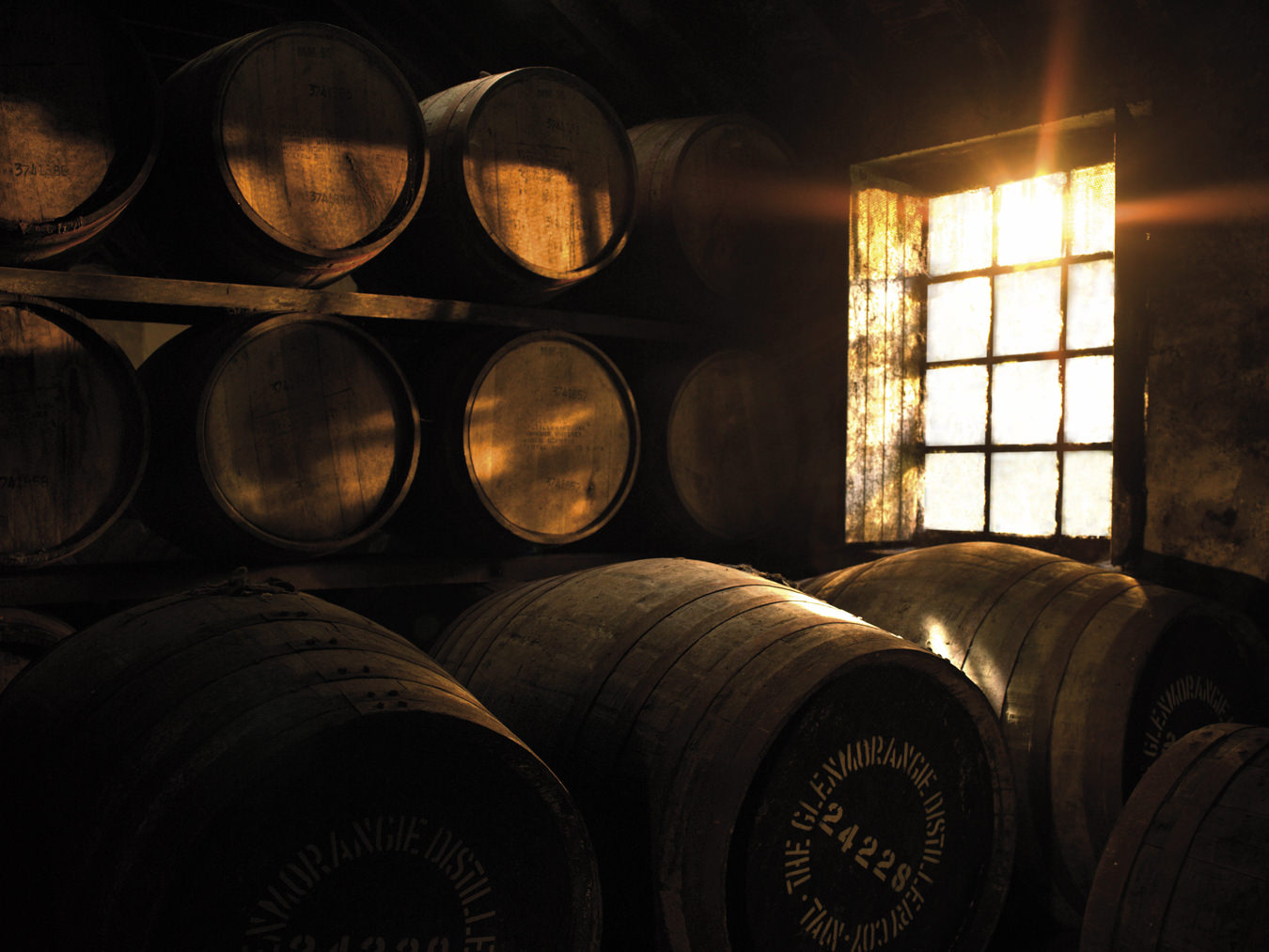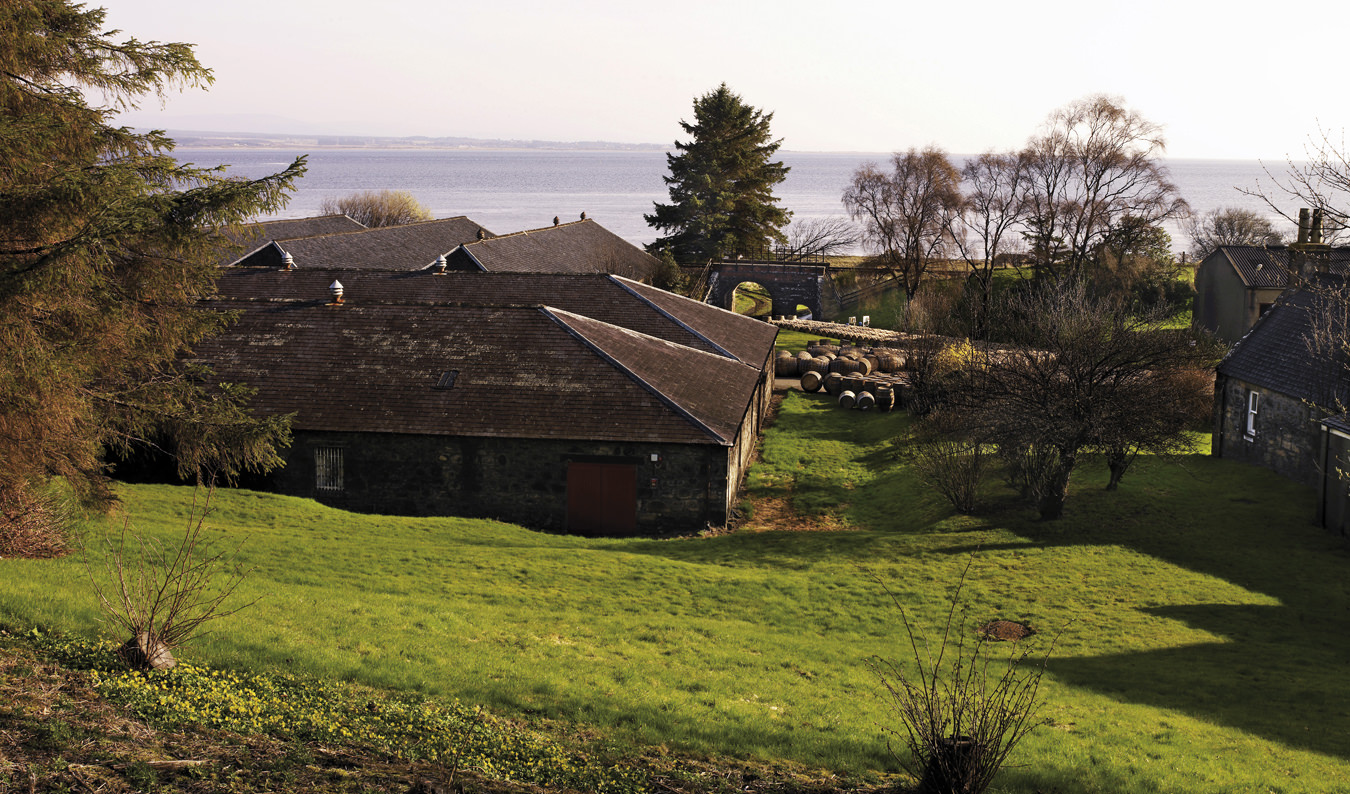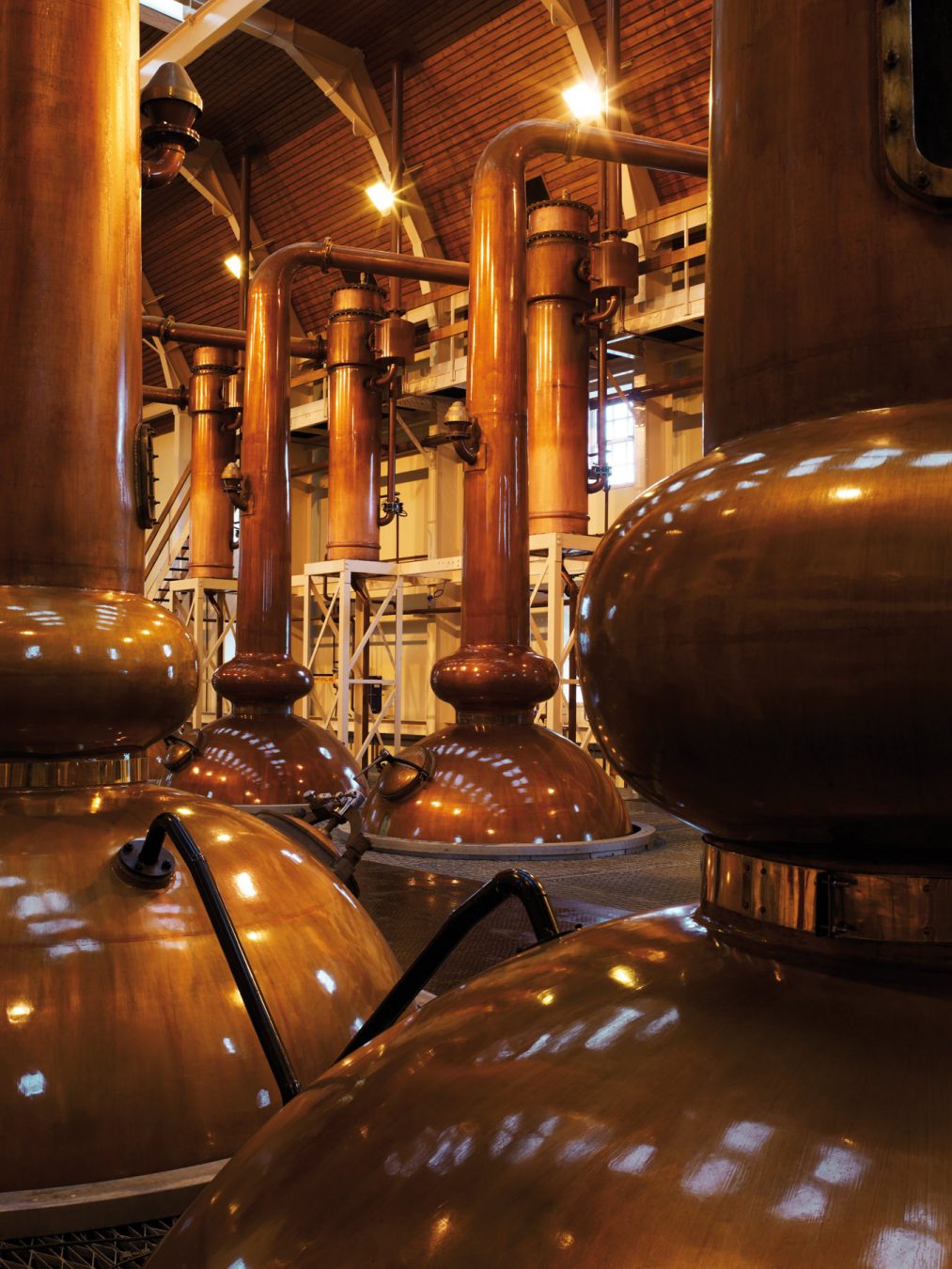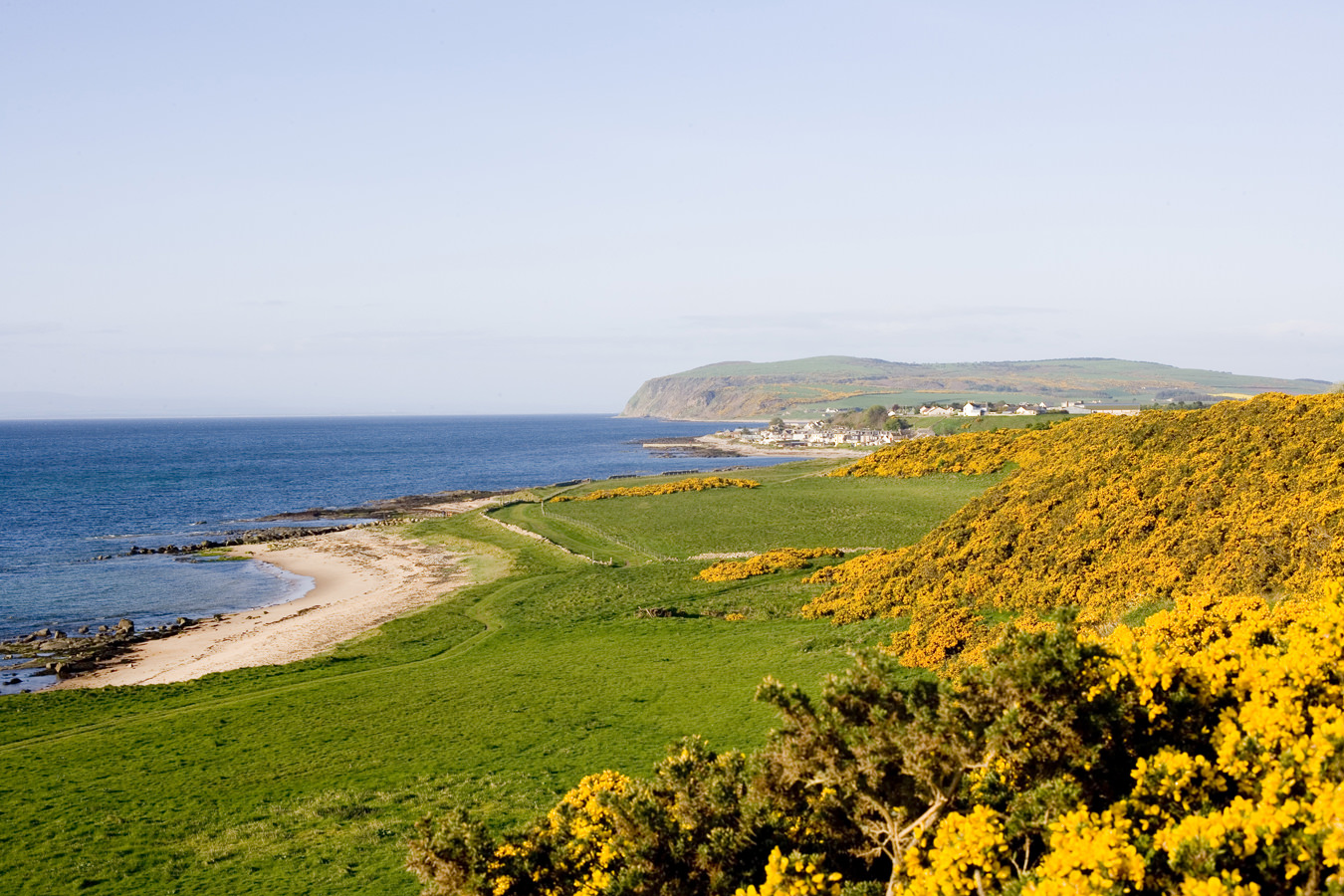Sitting quietly on the banks of the Dornoch Firth, in the far reaches of Northeast Scotland, is the Glenmorangie Distillery. Use the word “orangey” if you want to get the pronunciation right. Glenmorangie has been here since its establishment in 1843, by one William Matheson, who turned what was a brewery into the distillery, producing one of the best-selling single malt Scotch whiskies in the world. The distillery still uses the nearby Tarlogie Springs as the water source, its course running through both sandstone and limestone on its way into the Firth.
Glenmorangie is one of the very least phenolic, or smoky, malts in Scotland, relying instead on its unique, profound orange peel and light vanilla notes, charms appealing to novitiates as well as seasoned sippers. The whisky called The Original spends 10 years in a complex array of bourbon oak barrels, some from Missouri, some from Kentucky. The bourbon aging means the wood imparts less of its harsher characteristics, having had bourbon spirit in them for anywhere from two to four years. Glenmorangie uses the casks, which they source the wood for, leasing the barrels to bourbon producers before incorporating them into the distillery’s own stock, only twice. First-fill and second-fill casks, they call them. It favours a whisky of complexity and elegance over sheer power, fruity and delicate, with hints of sweet oak, and a spice array limning the whole. The finish is redolent of orange peel and some apricot, maybe even peach, a kind of deep reiteration of the overall palate.
The legendary Dr. Bill Lumsden, whose official title is head of distilling and whisky creation, has been making the whisky at Glenmorangie since 1995, although his history in the industry goes back much further. He oversaw the transition from the Glenmorangie 10 Year Old to The Original, marking a shift away from the age statement and towards a comprehensive house style. Distillery manager Andy MacDonald explains it this way: “The Original is the base upon which we build every single bottle of our whisky. The house style, floral, orange peel, is most accurately expressed there, and remains consistent throughout the entire portfolio.”
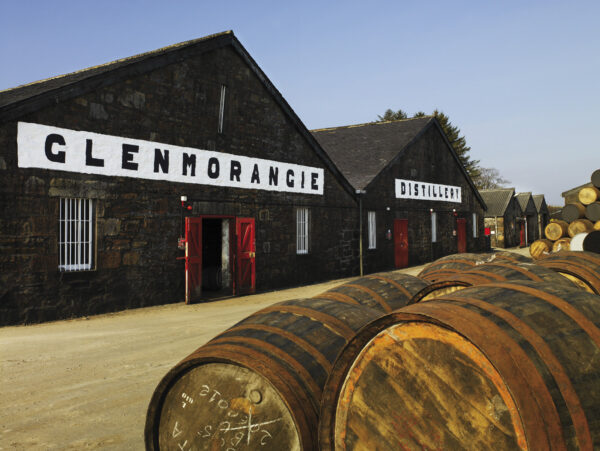
There are in fact many iterations of Glenmorangie, each with its own unique barrel and aging treatment. The Core Range is instructive all on its own. It includes, in addition to The Original, Lasanta, given two extra years’ aging in sherry casks; Quinta Ruban, with two extra years of age in port wood casks from the quintas of Portugal; and Nectar D’Or, with two extra years in barriques from the Sauternes region of Bordeaux. Each of these whiskies has its charms, but each is still, remarkably, obviously Glenmorangie.
There is a Prestige Range, a Private Edition Range, the Legends Collection, and at the pinnacle, the Limited Edition Pride, extra-matured in casks that had contained a French claret wine. During the 2016 British Open, held at the iconic Royal Troon links course, at which Glenmorangie continues as a major sponsor, several of the rarer whiskies were available—straight up, or as part of an array of cocktails, to taste at an on-site lounge. As the day went on, and golf stars made their way through the demands of 18 holes of links play, it was hard to imagine a finer context for sipping a rare dram of Glenmorangie. MacDonald took in the scene, saying, “if you had a bad round, you’ll need a good whisky. If you had a great round, you’ll need a good whisky.”
There is a fabulous guest facility a few kilometres from the distillery itself, called Glenmorangie House. After a day of touring the distillery, looking at Scotland’s tallest stills (which help give the whisky its light flavour), tasting barrel samples from the earthen-floored warehouse, and wandering along the firth for a few minutes, a home-cooked meal awaits. The whisky library in the living room features many different bottles, and a refrigerator of great ales and lagers, should the need arise. This is post-dinner paradise.
As the Scottish night descends, darkening the landscape and threatening to end a string of two consecutive days of sunny, warm weather, known to locals as “your classic Scottish summer”, it takes some consideration before deciding upon which Glenmorangie the night’s dreams will play out. The homage to limestone called Artein, finished in super-Tuscan casks, is a great choice, although the Tayne, finished in Amontillado sherry casks, is fabulous, too. Best advice: have a half dram of each, preceded by Lasanta. You only live once, or so they say.


